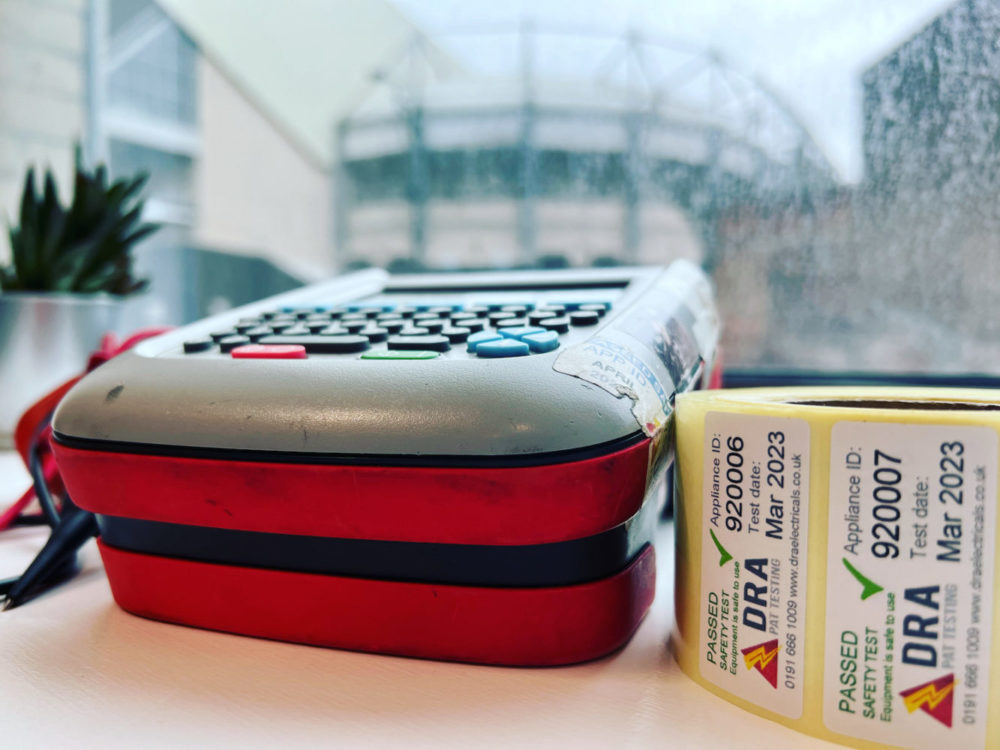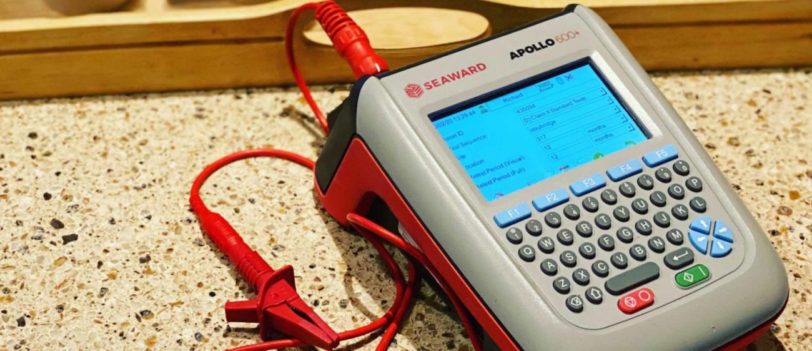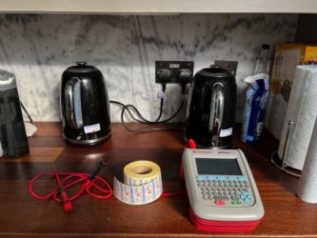What to do with personal electrical equipment staff bring into work
When staff bring personal electrical equipment to work, you as the employer, need to be sure that that equipment is safe to use and especially safe to plug in. If the equipment they bring in is faulty or not to British Standards, not only could it lead to them having an accident, but it could present a risk to your business, such as it could overheat and catch fire.
It’s for reasons such as this that it is essential that when staff bring personal electrical equipment to work you make sure it is safe to use.
Some companies have a policy that Staff simply are not allowed to bring personal electrical equipment to work, and plug it in.
Every year, around 1,000 workplace accidents are reported to the Health and Safety Executive that involve electricity, and about 30 people die from injuries caused by electrical hazards.
Under the Electricity at Work Regulations (1989), employers must make sure all electrical equipment is safe.
Employers must carry out an electrical risk assessment for any electrical hazards (including equipment). The assessment should detail who could be harmed by an electrical hazard, how the risk has been established and the precautions that are to be taken to control the risk.
An employer must also provide staff with training on electrical safety in the workplace.
Employers are also required to report certain incidents and injuries to the Health and Safety Executive.
Employers risk fines for not complying with the regulations, so it’s essential to be aware of electrical hazards in the workplace.
Here’s a handy electrical hazards checklist:
Employers should make sure all employees are aware of electrical safety at work.
Staff should be encouraged to watch out for any risks, and if they find faulty equipment, they should report it to the appropriate person. The equipment should not be used anymore until it has been checked by a qualified and or competent person.
Here are 6 sensible precautions to take:
- Make sure that employees know how to use their electrical equipment safely
- Ensure enough sockets are available so that they aren’t overloaded (such as by using an extension lead incorrectly)
- If cleaning an appliance, switch it off and unplug it first
- At the end of the day, switch all appliances off at the socket (this saves energy and will reduce your fuel bill too)
- Watch for trailing cables which might cause people to trip or fall – it may be worth getting a floor cable cover installed.
- Don’t put drinks or other liquids that can spill on top of electrical equipment
Staff bring personal electrical equipment to work
Personal equipment brought into work does need PAT testing, treat it like work equipment.
You are responsible for electrical equipment used at work, whether you have supplied it or not.
What would happen if that appliance caught fire or caused an accident – would you be protected if you hadn’t checked the appliance was safe?
Consider this: You take action to ensure your equipment is maintaining safety standards by getting regular PAT testing carried out; your insurance company is happy. Someone uses your premises (e.g. a DJ in a hotel) and their equipment has not been maintained; a fire starts and your premises are destroyed… are you insured?
If you allow anyone to bring their own electrical equipment onto your premises to be used, make sure it is safe – insist on seeing their up to date PAT records. If they can’t supply it, then get them to get their equipment tested before they bring it onto the premises. Want to be sure the job is done well – give them our contact details.
This applies to your staff bringing their own equipment to work, and contractors bringing tools and cleaning equipment for example.
Personal equipment: If you allow staff to bring personal equipment to work it should also be PAT tested – imagine if that appliance started a fire, and you have no evidence it had maintained safety standards.
Contractors: The same applies to contractors – their equipment should be tested before being used on their site; so make sure they have and supply you with in-date PAT certificates.
If you need further advice, or to arrange your PAT testing please contact us today



